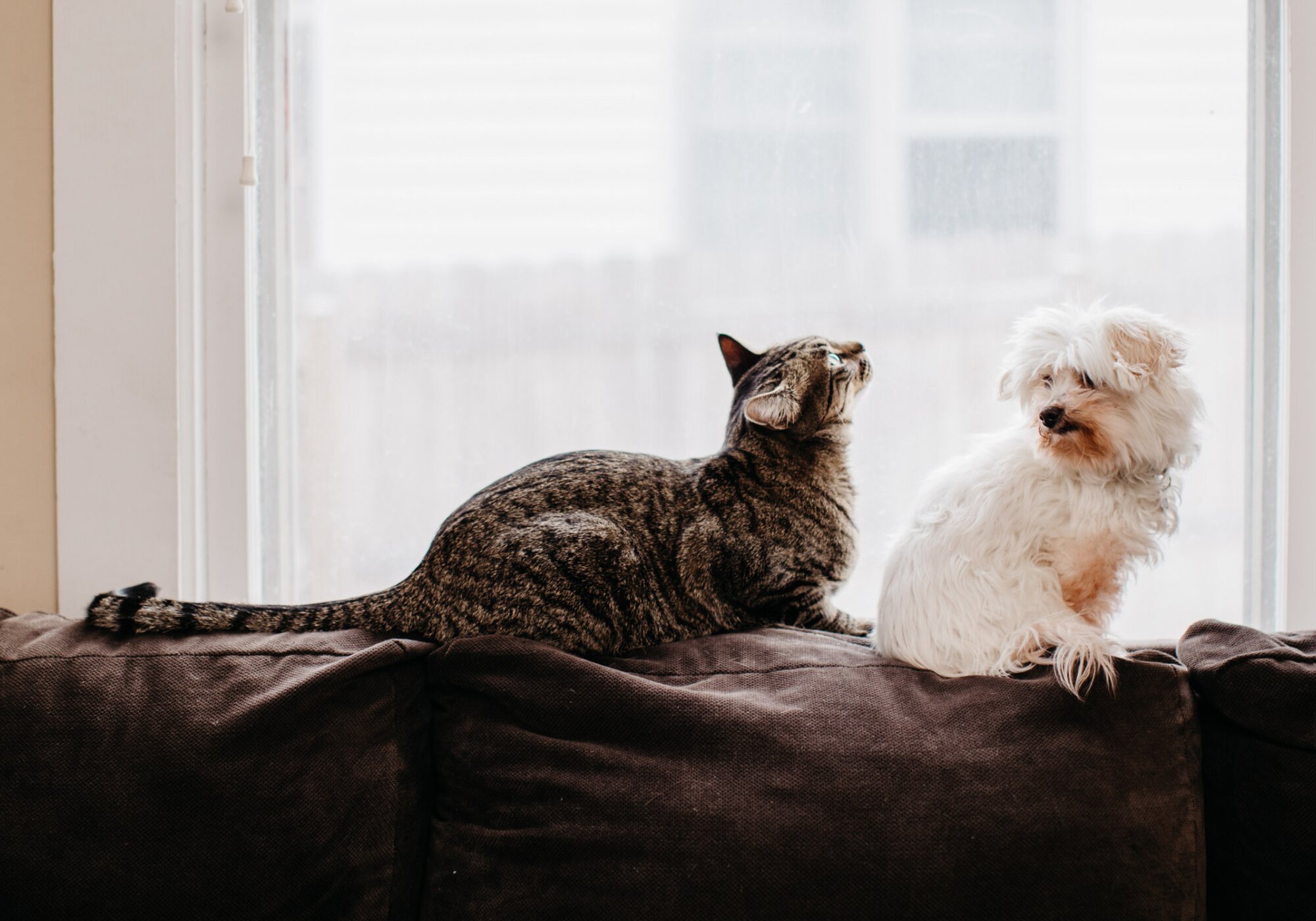Most pet owners can relate, treating fleas on dogs is no walk in the park. But with the right tools and treatments, you can get your pets through it.
To avoid flea bites on dogs and prevent infection, you need to know what to look for. Find out what flea bites look like on dogs and how to treat them effectively.
Already have flea protection but still fighting fleas?
Pair your treatment with PetFriendly's Rapid Flea Removal Kit to effectively eliminate fleas on your pet and in your home.

Does my dog have a flea infestation
No matter if you have a dog or a cat (or both), getting rid of fleas in your home is hard. The most common way to find out what's causing your dog to scratch is by looking in the right spots.
Common places to look for fleas

Fleas can be hard to see especially on dogs with thicker fur. Luckily, fleas have a few favorite hiding places.
The most common places to check for fleas are:
- Behind their ears
- Around their eyes
- Around the neck
- Near their hind legs
- In their armpits or groin
- Their stomach or abdomen
- At the base of their tail
If you think your dog has fleas, use a flea comb to brush your dog’s fur backward to create a part and find evidence of fleas.
7 signs your dog has fleas

Adult fleas are only one aspect of an active flea problem. The rest of the flea life cycle can make it difficult to kill fleas instantly on dogs. To avoid a flea infestation, you should know what to look for.
What do flea bites look like on dogs
So you’re probably wondering, “how do I know if my dog has fleas?” If you’re unsure where to look, start with these 7 signs of fleas on dogs.
1. Scratching, biting, or licking.
You might suspect fleas on your dog before you even see them. Dogs with fleas often scratch at their ears, legs, and tails. If your dog is scratching, it’s time to check for flea bites.
2. Adult fleas.
If you part your pet’s fur and find what looks like small moving specks of black pepper on your dog's skin, it’s likely fleas. Adult fleas are the easiest to see with a naked eye on your pet.
3. Flea dirt.
Flea dirt looks like small black specks on your dog’s skin. In reality, it's actually tiny bits of digested blood — aka flea feces. To test it, place the flea dirt on a wet, white paper towel. If it turns reddish-brown, your dog, unfortunately, has fleas.
4. Eggs and larvae.
Though not as easy to see, you may also find flea eggs and larvae around your home. After feeding, fleas drop thousands of tiny, white eggs from your pet. Eggs can inhabit bedding, carpet, and furniture until they develop into larvae.
5. Hair loss.
One common side effect of flea bites is hair loss. Flea saliva is very irritating and causes pets to scratch or bite to relieve the itchiness. You may notice hair loss across your dog’s lower back, tail, and hind legs.
6. Anemia.
Anemia often looks like pale gums and low energy in pets, especially in puppies. This occurs because of a tremendous amount of blood loss. Fleas can consume up to 15x their body weight, so they can do a lot of damage to your pet’s health.
7. Scabs and infection.
When a flea bites your dog it’ll leave small, red bumps on your dog’s skin. Much smaller than mosquito or tick bites, flea bites can become inflamed and tear open the more your dog scratches. Constant scratching can lead to other types of infections.

4 common flea-borne diseases in dogs
Like other unwanted pests, fleas can carry disease. While tick-borne illnesses are often more dangerous, there are a few flea-borne diseases that could affect your pet.
1. Flea allergy dermatitis (FAD).
Flea allergy dermatitis is a common skin infection among dogs in the United States. This skin infection happens when pets are allergic to fleas and their saliva.
The reaction occurs in two parts. The first is with a flea’s bite and the second happens when your pet scratches the bites to relieve the itchiness.
Common dog flea symptoms:
- Skin irritation
- Small bumps
- Red patches
- Hair loss
2. Bartonella (Cat-scratch disease).
Despite its name, cat-scratch disease can infect several types of animals. The name came from the association of bacteria that makes its way to an animal from an infected cat through a “cat scratch.”
Bartonella passes from fleas, who have consumed the bacteria, through their feces or flea dirt. The “dirt” then infects the scratched animal through abrasions in the skin.
Common dog flea symptoms:
- Weight loss or inappetence
- Weakness or lethargy
- Red eyes or pale gums
- Swollen lymph nodes
3. Murine typhus.
Murine typhus is a common flea-borne illness carried by rat fleas. Murine typhus, like cat-scratch disease, transmits to other animals through flea feces. The bacteria enter the bloodstream through a cut or abrasion, often as a result of scratching the irritated skin.
Common dog flea symptoms:
- Vomiting or diarrhea
- Lethargy
- Shaking
- Bad breath
4. Tapeworms.
While it might not be common practice to check your dog’s stool, this is a great place to determine if your pet has fleas. When pets swallow fleas, through self-grooming or eating flea-infected mice, they can also contract tapeworms.
Common dog flea symptoms:
- Weight loss
- Weakness or lethargy
- Bloated belly
- Vomiting or diarrhea
What to do if you can’t get rid of fleas
Feel like you’ve tried everything, but nothing seems to work?
Knocking out all stages of the flea life cycle is the only way to get rid of fleas and keep them from coming back. Cyclekiller is our proven method to eliminate them.
Get everything you need to get rid of fleas delivered to your door with overnight shipping. Eradicating fleas can be tricky, each case is unique.
Complete flea control doesn’t happen overnight. But knowing the signs and symptoms of fleas on dogs is the first step in getting your pets the care they need.


